Possibly the Dendera zodiac could depict the
numerous (and numinous) effects of a shift of
the northern pole star.
Anciently the north
polar region had been ruled by Draco (as represented by
Thuban, α Draconis), but due to the precession a
shift would inevitably have been forced:

... The star could be seen, both
by day and night, from the bottom of the central
passage of the Great Pyramid of Cheops (Knum
Khufu) at Ghizeh, in 30° of north latitude, as
also from the similar points in five other like
structures; and the same fact is asserted by Sir
John Herschel as to the two pyramids at Abousseir
...
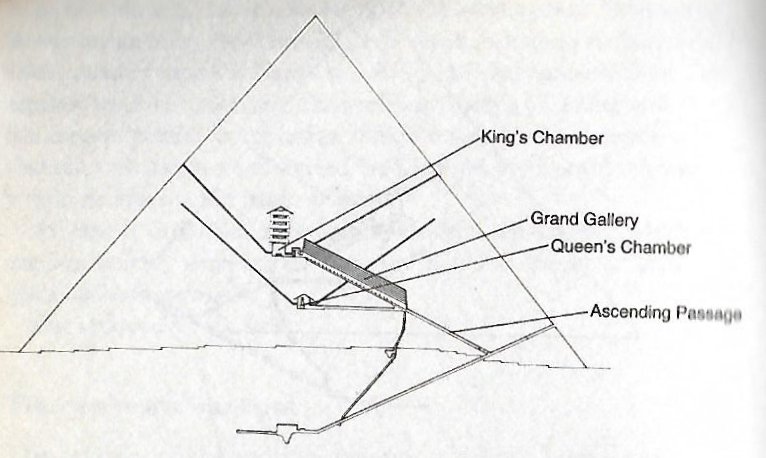
The position of the
star at the north pole determined the framework for
the positions of
the cardinal
points, and when the star rising with the Sun at
spring equinox due to the precession had to be
shifted to a star rising earlier in this framework it was
similar to how Thuban himself much earlier had changed
the previous leader of the framework for the whole sky (viz. Ursa Major, Mayan Itzam-Yeh):

The precessional cycle
had anciently been measured out to be 26000 years, and
therefore around 26000 /
12 (zodiacal signs) = 2100 years were needed for shifting
the stars at the equinoxes from one sign to the next
in line:

Although with 13 signs
= 12 + the hidden (ngaro) one (the Serpent),
Garo. 1. To disappear, to
become lost. He tere, he garo. He ran away
and disappeared. He û'i te Ariki, ku garo á te
kaíga i te vai kava. The king saw that the land
had disappeared in the sea. I te ahiahi-ata he
garo te raá ki raro ki te vai kava. In the
evening the sun disappears under the sea. Ku garo
á te kupu o te tai i a au. I have forgotten the
words of the song (lit. the words of the song have
become lost to me). Ina koe ekó garo. Don't
disappear (i.e. don't go), or: don't get lost on the
way. 2. Hidden. Te mana'u garo, hidden
thoughts. Kona garo o te tagata, 'people's
hidden places': pudenda. Vanaga. To disappear, to
stray, to omit, to lose oneself, to pass, absent, to
founder, to drown, to sink; garo noa, to go
away forever, to be rare; garo atu ana,
formerly. Hakagaro, to cover with water;
hakagaro te rakerakega, to pardon. Garoa,
loss, absence, to be away, to drown, not
comprehended, unitelligible. Garoaga,
setting; garoaga raa, sunset, west.
Garoraa, the sun half-set. Garovukua, to
swallow up. Churchill.
... i te toru te kauatu.o te raā.o tangaroa
uri.he ūi.a Hotu.i te moai.maea.ko oto uta
...
there would
be around 2000 years from one sign to the next. Or 1000
years if the half-months (i.e. also the female counterparts)
were counted (the celestial cycle goes from 0h to
23h and there were 12 + 11 = 23 zodiacal
constellations depicted in the ceiling at Dendera).
... the first month of the Moriori year, was named
Rongo (Lono). On the first of the new
year the Moriori launched a small canoe to
Rongo, although they built and used only rude
craft for their fishing excursions. The canoe was
manned by twelve figures symbolizing the
personifications of the twelve months. Sometimes
twenty-four figures were placed in the canoe, and
Skinner interprets the additional twelve as
representing the female counterparts of the months.
As an old Maori once remarked. 'Everything has its
female counterpart ...
When in the time-frame of rongorongo Hamal was
observed to culminate (to cross zenith at 21h =
ca 0.88 * 24h) it suggested the place of the right ascension
line for OCTOBER 8 (→ 8-8), when in the
age of the Bull the Sting of the
Scorpion had done its job.
... With the Bull at spring
equinox and Scorpion at autumn equinox, as parts
of the ancient framework, I think it would have
been difficult to accept precession moving
Taurus later and later into the year. The Sign
of Summer should not come later. On the other
hand, it would have been easy to accept how
precession moved the Sign of Winter later in
autumn, implying a longer duration for Summer.
When Virgo was pushing
the Libra scale-beam with her right big toe it
could be a Sign of how precession moved Libra
later in the year. South of the equator, though,
such an idea would not have been acceptable -
Summer Sun should not arrive later in the year.
Maybe, therefore, the kuhane of Hau
Maka was bound to step on the scale-beam
(the 'bamboo') to break it. She created a
'dawn-break'. North of the equator, when the
dangerous Scorpius had been pushed away from
autumn equinox it would have been easy to accept
the fact and to instead insert Libra at equinox.
Tradition, however, could have maintained the
idea of the claws of the Scorpion being at
equinox, and therefore the names for the stars
of Libra should be 'claws' (zuben).
But the Scorpion kept her claws ...
The
modern date corresponding to OCTOBER 8 would
have been
deduced to be December 11 (→ 12 'grey' + 11 'blue').
|
OCT 7 (*200) |
8 (281) |
9 |
10 |
 |
 |
 |
 |
|
Ga7-31 (200 = 180 + 20) |
Ga7-32
|
Ga7-33 |
Ga7-34 |
|
LESATH
(Sting) =
υ
Scorpii,
δ
Arae (264.7),
CHOO (Club) =
α
Arae
(264.9) |
Al Shaula-17
ALWAID
(Mother Camels) = β Draconis, MAASYM
(Wrist) = λ Herculis
(265.1),
SHAULA
(Sting) =
λ
Scorpii
(265.3),
KUMA = ν Draconis
(265.6),
σ
Arae (265.9)
HAMAL (α ARIETIS)
|
RAS ALHAGUE
= α Ophiuchi
(266.1),
SARGAS = θ Scorpii (266.3),
μ Ophiuchi, π Arae (266.5),
NAN HAE (Southern Sea) = ξ Serpentis
(266.6), AL
DHĪLI (The Wolf) = ω Draconis,
ι Herculis (266.7) |
λ
Arae (267.1),
GIRTAB (Seizer) = κ Scorpii,
ο
Serpentis (267.6),
DSIBAN (Wolf Pair) = ψ Draconis
(267.9) |
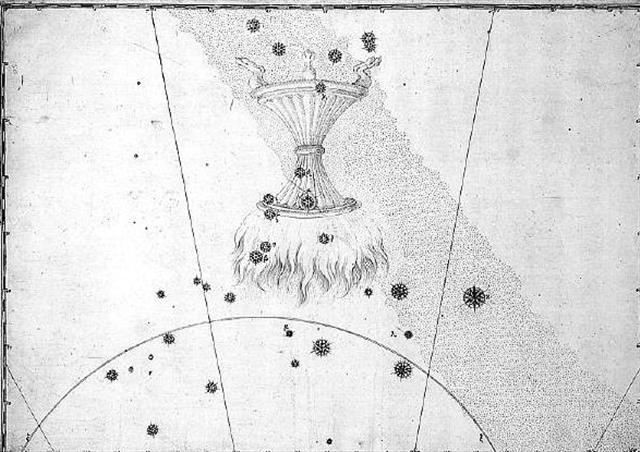 |
|
Dec 10 (*264) |
11 (345 =
281 + 8 * 8) |
12 |
LUCIA |
|
°Dec 6 |
7 (341) |
8 |
9 (*264) |
|
'Nov 13 (*237) |
14 |
15 |
16 (320) |
|
Tangaroa Uri 30 |
"Oct 31 (*224) |
"Nov 1 (305) |
2 |
|
Lesath was
a name both for ν (*244) and for υ
(*264) Scorpii, and there were 20 right
ascension days from ν to υ.
... Upsilon
(uppercase Υ, lowercase υ; Greek:
ύψιλον, ýpsilon ... is the 20th letter
of the Greek alphabet. In the system of
Greek numerals, Υ has a value of 400. It
is derived from the Phoenician waw ...
Waw (wāw 'hook') is the sixth
letter of the Semitic abjads ...
...
Upsilon is known as Pythagoras'
letter, or the Samian letter,
because Pythagoras used it as an emblem
of the path of virtue or vice
...
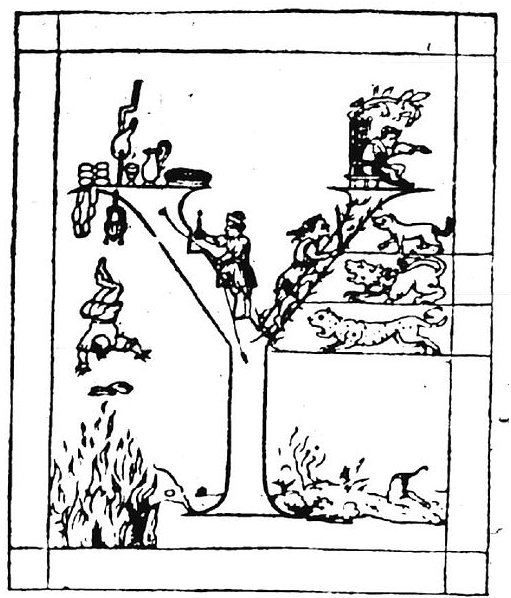
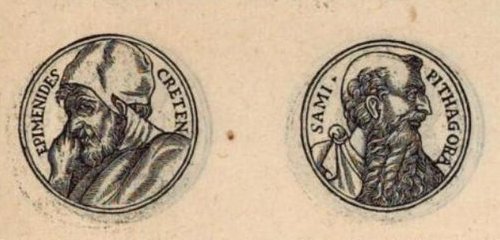 |
|
ψ
Orionis (81.1),
NIHAL (Thirst-slaking Camels) =
β
Leporis
(81.7) |
KHUFU
MINTAKA (Belt) = δ Orionis,
υ Orionis (82.4), χ Aurigae (82.5), ε
Columbae (82.6)
*41.0 = *82.4 - *41.4 |
KHAFRE
Al Hak'ah-3 (Brand) /
Mrigashīrsha-5 (Stag's Head) /
Turtle Head-20 (Monkey) /
Mas-tab-ba-tur-tur (Little Twins)
ARNEB =
α
Leporis, Crab Nebula = M1 Tauri
(83.0,
φ¹
Orionis (83.1),
HEKA
=
λ
Orionis, Orion Nebula = M42
(83.2),
φ²
Orionis (83.6),
ALNILAM (String of Pearls) =
ε
Orionis
(83.7) |
MENKAURE
Three Stars-21 (Gibbon) /
Shur-narkabti-sha-shūtū-6 (Star in the
Bull towards the south)
/ ANA-IVA-9
(Pillar of exit)
HEAVENLY GATE =
ζ
Tauri,
ν
Columbae (84.0),
ω
Orionis (84.2),
ALNITAK (Girdle) =
ζ
Orionis,
PHAKT (Phaet) =
α
Columbae
(84.7) |
 |
 |
 |
 |
|
Ga1-17 |
Ga1-18 |
Ga1-19 |
Ga1-20 |
 |
This day the Sun reached the right ascension line
at
β Draconis (Alwaid) at the right eye of
the Serpent:
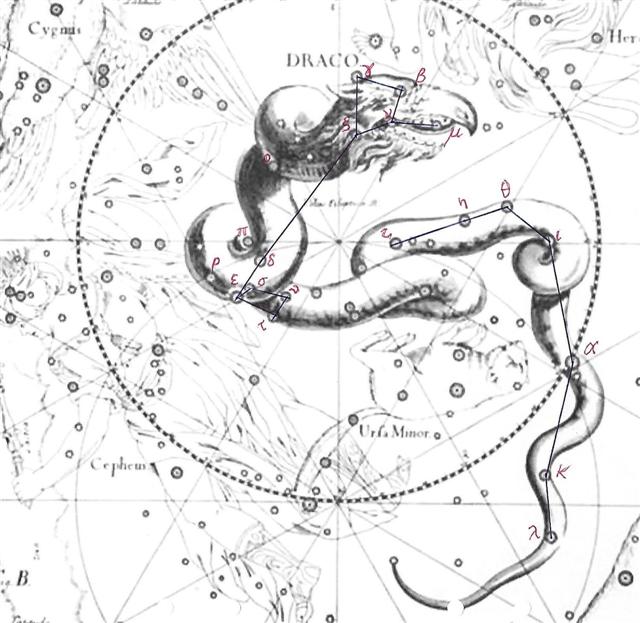
And the Sun would reach his lower jaw (Grumium. ξ
Draconis) 5 days later:
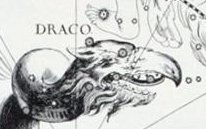
.jpg)
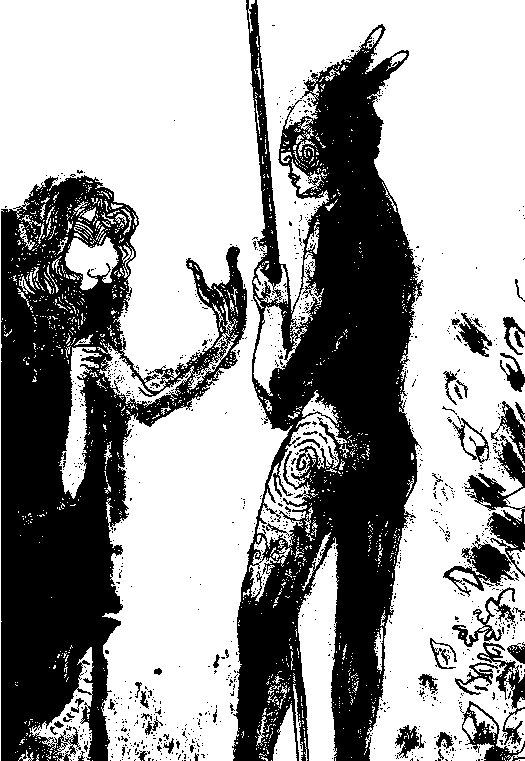
|
OCT 11 |
12 |
13 |
14 (*207) |
15 (288) |
 |
 |
 |
 |
 |
|
Ga8-1 |
Ga8-2 |
Ga8-3 |
Ga8-4 |
Ga8-5 (208) |
|
KELB ALRAI (Dog of the Shepherd) = β
Ophiuchi,
μ
Arae (268.1),
KEW HO (Nine Rivers) = μ Herculis
(268.6),
η
Pavonis (268.7),
APOLLYON
=
ι
Scorpii
(268.9)
*231.0 - *4.0 = *227.0 |
MULIPHEN (Oaths) = γ Ophiuchi
(269.0),
BASANISMUS = G
Scorpii
(269.5),
PHERKARD (Dim One of the Two Calves)
= δ Ursae Minoris
(269.9) |
PTOLEMY CLUSTER
= M7 Scorpii
(270.5),
GRUMIUM
(Lower Jaw) = ξ Draconis
(270.9)
*227.0 + *2.0 = *229.0
270 - 229 = 41 |
RUKBALGETHI GENUBI (Bending Claw) =
θ Herculis
(271.1),
ξ
Herculis (271.5),
ETAMIN (Head) = γ Draconis,
ν
Herculis (271.7),
ν
Ophiuchi (271.8) |
CAT'S EYE
= NGC6543 Draconis
(272.2),
ζ
Serpentis (272.4),
τ
Ophiuchi (272.9)
*231.0 = *272.4 - *41.4 |
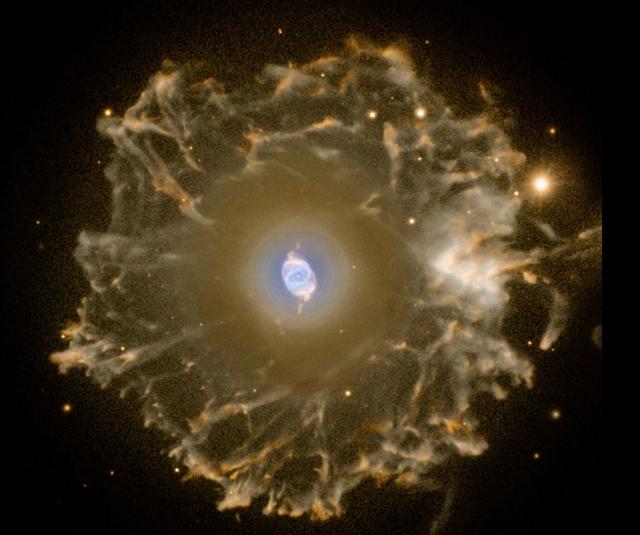 |
|
Dec 14 (*268) |
15 |
16 (350) |
17 |
18 |
|
°Dec 10 (*264) |
11 (345) |
12 |
13 |
14 |
|
'Nov 17 (*241) |
18 |
19 |
20 (324) |
21 |
|
"Nov 3 (*227) |
4 |
(Ko) Ruti 5 |
6 (310) |
7 |
 |
|
ο Aurigae (85.8), γ Leporis (85.9)
YANG MUN (α Lupi) |
μ
Columbae,
SAIPH (Sword) =
κ
Orionis
(86.5),
τ
Aurigae,
ζ
Leporis (86.6) |
υ
Aurigae (87.1),
ν
Aurigae (87.2),
WEZN (Weight) =
β
Columbae,
δ
Leporis (87.7),
TZE (Son) =
λ
Columbae
(87.9) |
Ardra-6 (The Moist One) /
ANA-VARU-8 (Pillar to sit by)
χ¹ Orionis,
ξ
Aurigae (88.1),
BETELGEUZE
=
α
Orionis
(88.3),
ξ
Columbae (88.5),
σ
Columbae (88.7) |
η
Leporis (89.0),
PRAJA-PĀTI (Lord of Created Beings)
=
δ
Aurigae, MENKALINAN (Shoulder of the
Rein-holder) =
β
Aurigae, MAHASHIM (Wrist) =
θ
Aurigae,
and
γ
Columbae (89.3),
π
Aurigae (89.4),
η
Columbae (89.7)
*48.0 = *89.4 - *41.4
μ Orionis
(90.3),
χ² Orionis
(90.5) |
 |
 |
 |
 |

 |
|
Ga1-21 |
Ga1-22 |
Ga1-23 |
Ga1-24 |
Ga1-25
Ga1-26 |
 |
As to Thuban (α) we have
seen how it
was at the culmination line for 21h in June 7:
|
APRIL 1 (91) |
2 |
3 |
4 (*14) |
 |
 |
 |
 |
|
Ga1-11 |
Ga1-12 |
Ga1-13 |
Ga1-14 |
|
HAEDUS II = η
Aurigae
(75.9) |
5h (76.1)
ε
Leporis (76.0),
CURSA
=
β
Eridani
(76.4),
λ
Eridani (76.7) |
μ Aurigae, μ
Leporis (77.6) |
ĸ Leporis
(78.0),
RIGEL
(Foot) =
β
Orionis
(78.1),
Flaming Star =
IC405
(78.2),
CAPELLA
(Little Goat) =
α
Aurigae
(78.4),
ο
Columbae,
τ
Orionis (78.8)
*37.0 = *78.4 -
*41.4
THUBAN (α
Draconis) |
|
... In view of
the almost
universal
prevalence of
the Pleiades
year throughout
the Polynesian
area it is
surprising to
find that in the
South Island and
certain parts of
the North Island
of New Zealand
and in the
neighboring
Chatham Islands,
the year began
with the new
Moon after the
yearly morning
rising, not of
the Pleiades,
but of the star
Rigel in Orion
...

From Aldebaran
there was a
great expansion
stretching all
the way between
Rigel and
Capella.
Kokoro.
Width, expanse;
wide, spacious.
Te kokoro o
te hare, the
expanse of a
wide house.
Vanaga. To
widen, to
expand.
Churchill. |
|
June 4 |
5 |
6 (157 = 314 /
2) |
7 (*78) |
|
°May 31 (151) |
°June 1 |
2 (*73) |
3 |
|
'May 8 (128) |
9 |
10 (*50) |
11 |
|
"April 24 (114) |
Vaitu Nui
25 (115)
(E:17) |
26 (*36) |
27 |
|
... On the
twenty-fifth day
[raa] of
the first month
('Vaitu Nui'),
Ira and Makoi
set sail. (i
te rua te
angahuru marima
raa o te vaitu
nui.i oho.mai ai
a ira.ko Makoi).
 |
|
DAY 75 - 64 = 11 |
12 (= 115 - 84 -
19) |
13 |
14 |
|
11 Roro Hau
a mana ai
rea |
12 Vai Poko
a raa mata
turu |
13 Ko Te Hereke
a kino ariki |
14 Hatu Ngoio
a taotao
ika |
|
8 he ngu haha
tea
taro guhu haha
tea |
9 he mango
taro magó |
10 he hahara
rapanui
taro harahara
rapanui |
1 he ti |
|
Mago.
Spotted dogfish,
small shark.
Vanaga. Mogo,
shark. P Pau.:
mago,
id. Mgv. mago,
id. Mq. mano,
mako, mono, moko
id. T. maó,
id. In addition
to this list the
word is found as
mago in
Samoa, Maori,
Niuē,
and in Viti as
mego.
It is only in
Rapanui and the
Marquesas that
we encounter the
variant
mogo.
Churchill.
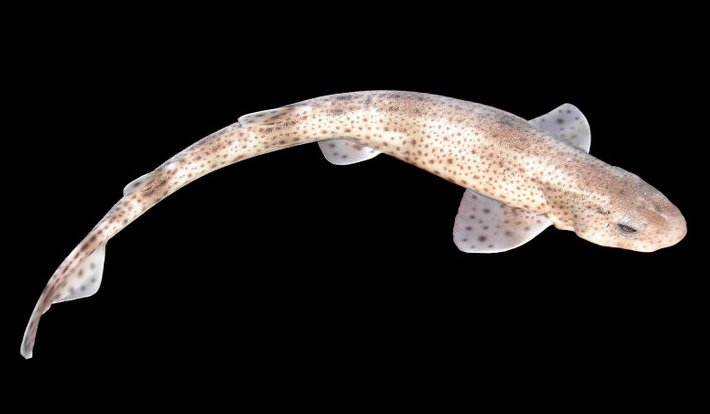
.jpg)
Hara.
Harahara 1.
Misaligned (of
roofing,
basketware,
etc.); e
harahara nó te
kete, the
basket is
misaligned (its
strips are not
parallel. 2. A
sort of taro. 3.
Latrine,
defecating
ground. Vanaga.
1. Pandanus. P
Mgv.: ara,
puhara,
pandanus (tree);
hara, a
bunch of
pandanus fruit,
old pandanus.
Mq.: faá haá,
pandanus. Ta.:
fara, id.
2. Error,
mistake,
oversight,
wrong; to err,
to confound, to
mistake;
manau hara,
illusion;
toua hara,
discussion
without knowing
the object. P
Mgv.: ara,
arara,
defective,
abortive, to
miss, to fail, a
fault, a
quarrel; hara,
a fault, a
mistake, an
error, a
dispute, a
quarrel,
undisciplined.
Mq.: hara,
a rake,
libertine. Ta.:
hara,
sin, fault,
crime.
Churchill.
Haha. 1.
Mouth (oral
cavity, as
opposed to
gutu, lips).
2. To carry
piggy-back.
He haha te poki
i toona matu'a,
the child took
his father on
his back. Ka
haha mai,
get onto my back
(so I may carry
you). Vanaga. 1.
To grope, to
feel one's way;
po haha,
darkness,
obscure. 2.
Mouth, chops,
door, entrance,
window; haha
pipi, small
mouth; haha
pipiro, foul
breath; ohio
haha, bit of
bridle; tiaki
haha,
porter,
doorkeeper.
Churchill.
Ha. 1.
Four. 2. To
breathe.
Hakaha'a, to
flay, to skin. Vanaga. 1. Four. P Mgv., Mq., Ta.: ha, id.
2. To yawn, to
gape. 3. To
heat. 4.
Hakaha, to
skin, to flay;
unahi hakaha,
to scale fish.
Mgv.: akaha,
to take to
pieces, to take
off the bark or
skin, to strip
the leaves off
sugarcane. 5.
Mgv: ha,
sacred,
prohibited. Mq.:
a, a
sacred spot.
Sa.: sa,
id. Churchill.
... Thuban had
been the star at
the North Pole
when the great
Egyptian
pyramids where
built.

... The star
could be seen,
both by day and
night, from the
bottom of the
central passage
of the Great
Pyramid of
Cheops (Knum
Khufu) at
Ghizeh, in 30°
of north
latitude, as
also from the
similar points
in five other
like structures;
and the same
fact is asserted
by Sir John
Herschel as to
the two pyramids
at Abousseir ...
For some reason,
too, it had
taken their
fancy to place
the Great
Pyramid almost
exactly on the
30th parallel at
latitude 29º 58'
51". This, a
former
astronomer royal
of Scotland once
observed, was 'a
sensible
defalcation from
30º', but not
necessarily in
error: For if
the original
designer had
wished that men
should see with
their body,
rather than
their mental
eyes, the pole
of the sky from
the foot of the
Great Pyramid,
at an altitude
before them of
30º, he would
have had to take
account of the
refraction of
the atmosphere,
and that would
have
necessitated the
building
standing not at
30º but at 29º
58' 22'
...
Hatu. 1.
Clod of earth;
cultivated land;
arable land (oone
hatu). 2.
Compact mass of
other
substances:
hatu matá,
piece of
obsidian. 3.
Figuratively:
manava hatu,
said of persons
who, in
adversity, stay
composed and in
control of their
behaviour and
feelings. 4. To
advise, to
command. He
hatu i te vanaga
rivariva ki te
kio o poki ki
ruga ki te
opata, they
gave the
refugees the
good advice not
to climb the
precipice; he
hatu i te vanaga
rakerake, to
give bad advice.
5. To collude,
to unite for a
purpose, to
concur. Mo
hatu o te tia o
te nua, to
agree on the
price of a
nua cape. 6.
Result,
favourable
outcome of an
enterprise.
He ká i te umu
mo te hatu o te
aga, to
light the earth
oven for the
successful
outcome of an
enterprise.
Vanaga. 1.
Haatu,
hahatu,
mahatu. To
fold, to double,
to plait, to
braid; noho
hatu, to sit
crosslegged;
hoe hatu,
clasp knife;
hatuhatu, to
deform. 2. To
recommend.
Churchill. In
the Polynesian
dialects proper,
we find Patu
and Patu-patu,
'stone', in New
Zealand; Fatu
in Tahiti and
Marquesas
signifying
'Lord',
'Master', also
'Stone'; Haku
in the Hawaiian
means 'Lord',
'Master', while
with the
intensitive
prefix Po
it becomes
Pohaku, 'a
stone'.
Fornander.
Goio.
Mgv.: a black
seabird. Mq.:
koio,
noio, a
bird. Ha.:
noio, a
small black bird
that lives on
fish. Churchill. |
Furthermore, *212.8 (Thuban) - *30.5 (Hamal) =
*182.3 - i.e. when the Full Moon was at the
right ascension line for Thuban it could be
deduced that the Sun was at Hamal (i.e. by using
the Hindu nakshatra method).
... In ancient times the priest-astronomers
(Brahmans) determined the recurrence of the
solstices and equinoxes by the use of the
gnomon. Later they developed the Nakshatra
system of star reference to determine the
recurrence of the seasons, much as the Greeks
used the heliacal rising of some star for the
same purpose. An example of the operation of the
Nakshatra system in antiquity can be seen
in figure 6.9
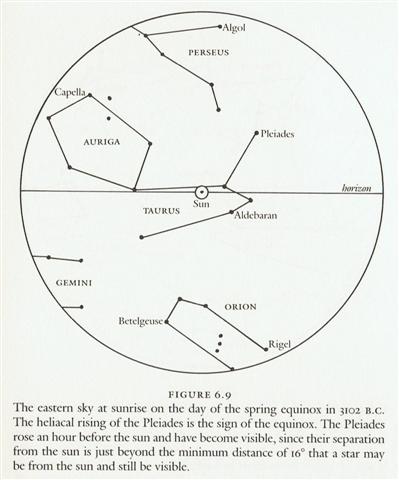
|
AUG 14 |
15 |
16 (*148) |
17 (229) |
18 |
19 |
 |
 |
 |
 |
 |
 |
|
Ga6-6 |
Ga6-7 |
Ga6-8 (148) |
Ga6-9 |
Ga6-10 |
Ga6-11 |
|
CLOSE
TO THE
SUN: |
|
MUPHRID (Solitary Star) = η Bootis
(210.1), ζ Centauri (210.3) |
φ Centauri (211.0), υ¹ Centauri (211.1),
υ² Centauri (211.8), τ Virginis (211.9) |
AGENA (At the Knee) = β Centauri
(212.1),
θ
Apodis (212.5),
THUBAN
(Dragon) =
α
Draconis
(212.8) |
14h (213.1)
π
Hydrae,
χ
Centauri (213.0),
MENKENT (Shoulder of the Centaur) = θ
Centauri
(213.1) |
Neck-2 (Dragon)
ASELLUS TERTIUS (3rd Ass Colt) = κ
Bootis,
κ Virginis,
14 Bootis
(214.8) |
Al Ghafr-13 (The Cover) /
Svāti-15 (Very Good) /
TAHUA-TAATA-METUA-TE-TUPU-MAVAE-6 (a
pillar to stand by)
15 Bootis
(215.2),
ARCTURUS
=
α
Bootis
(215.4),
ASELLUS SECUNDUS (2nd Ass Colt) = ι
Bootis
(215.5),
SYRMA
(Train of the Virgin's Robe) =
ι
Virginis,
λ
Bootis (215.6),
η
Apodis (215.8)
*174.0 = *215.4 - *41.4 |
|
Oct 17 (290) |
18 |
19 |
20 |
21 (*214) |
22 |
|
°Oct 13 |
14 |
15
(*208) |
16 |
17 (290) |
18 |
|
'Sept 20 |
21 |
EQUINOX |
23 (*186) |
24 |
25 (268) |
|
"Sept 6 |
7 |
8 |
9 (*172) |
10 |
11 (254) |
|
DAY 210 |
211 |
212 |
213 (= 229 - 16) |
214 (= 2 * 107) |
215 |
|
CLOSE
TO THE FULL MOON: |
|
FEBR 12 |
13 |
2-14
(45) |
15 |
16 (*332) |
17 (413) |
|
Al Sharatain-1 /
Ashvini-1 /
Bond-16 (Dog) /
Mahrū-sha-rishu-ku-1 (Front of the Head
of Ku)
SEGIN =
ε
Cassiopeia, MESARTHIM =
γ
Arietis,
ψ
Phoenicis (27.2),
SHERATAN
(Pair of Signs) =
β
Arietis,
φ
Phoenicis (27.4)
*351.0 = *27.4 - *41.4 |
ι Arietis (28.0), λ Arietis (28.2), υ
Ceti (28.8) |
ALRISHA
(The Knot) = α Piscium,
χ Phoenicis (29.2), ε Trianguli (29.4),
ALAMAK (Caracal) = γ Andromedae
(29.7)
*353.0 = *29.4 - *41.4 |
Arku-sha-rishu-ku-2 (Back of the Head of
Ku)
2h (30.4)
κ
Arietis (30.3),
HAMAL
(Sheep) =
α
Arietis
(30.5)
ALKES (α
Crateris) |
DELTOTUM = β Trianguli
(31.2), ι Trianguli (31.7), η Arietis
(31.9) |
ξ¹ Ceti (32.1) |
 |
|
April 17 (107) |
18 (365 +
108) |
19 |
20 (*395) |
21 (111) |
22 |
|
°April 13 |
4-14 |
15 |
16 (471 = 1½ * 314) |
17 (107) |
18 |
|
'March 21 |
22 |
23 |
24 (*368) |
EQUINOX |
26 (85) |
|
"March 7 |
8 |
9 |
10 (*354) |
11 |
12 |
|
DAY 27 |
28 |
29 = 212 - 183 |
30 |
31 |
32 |
Evidently, once upon a time Thuban had ruled that Hamal (presumably king Oto
Uta) should be the first king of a flock of 10:
... Strassmeier and Epping, in
their Astronomishes aus Babylon, say that
there its stars formed the third of the twenty-eight
ecliptic constellations, - Arku-sha-rishu-ku,
literally the Back of the Head of Ku, - which had
been established along that great circle milleniums
before our era; and Lenormant quotes, as an
individual title from cuneiform inscriptions,
Dil-kar, the Proclaimer of Dawn, that Jensen
reads As-kar, and others Dil-gan, the
Messenger of Light.
George Smith inferred from
the tablets that it might be the Star of the
Flocks; while other Euphratean names have been
Lu-lim, or Lu-nit, the Ram's
Eye; and Si-mal or Si-mul, the Horn
star, which came down even to late astrology as the
Ram's Horn. It also was Anuv, and had
its constellation's titles I-ku and I-ku-u,
- by abbreviation Ku, - the Prince, or the
Leading One, the Ram that led the heavenly flock,
some of íts titles at a different date being applied
to Capella of Auriga. Brown associates it with
Aloros, the first of the ten mythical kings of Akkad
anterior to the Deluge, the duration of whose reigns
proportionately coincided with the distances apart
of the ten chief ecliptic stars beginning with
Hamal, and he deduces from this kingly title the
Assyrian Ailuv, and hence the Hebrew Ayil;
the other stars corresponding to the other mythical
kings being Alcyone, Aldebaran, Pollux, Regulus,
Spica, Antares, Algenib, Deneb Algedi, and Scheat
...
Lahun, Maya
number 10, has a bared jaw-bone and the preceding
number 9 (Bolon) has spots on his face.
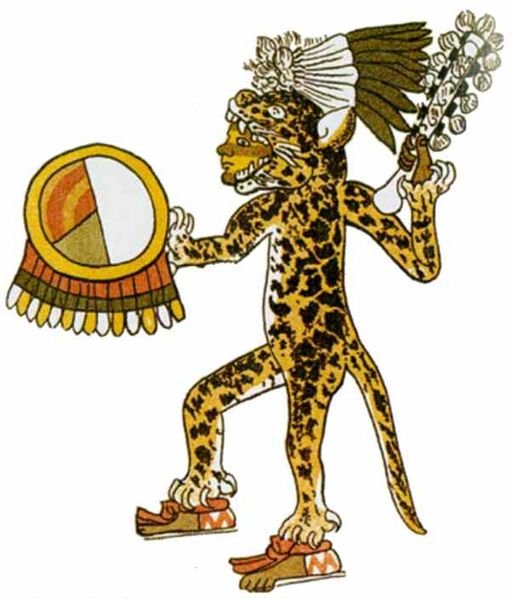
183 (white) + 107
(orange) + 75 (dark) = 365.
|
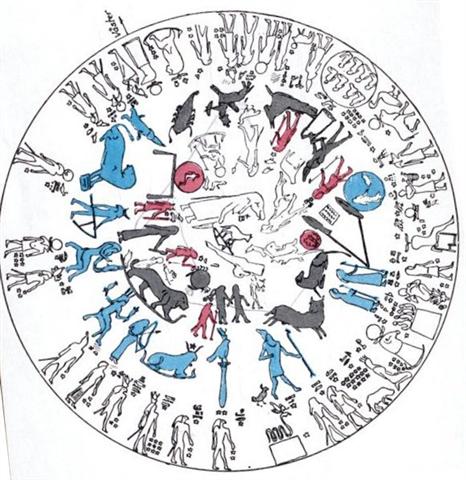















.jpg)














.jpg)






